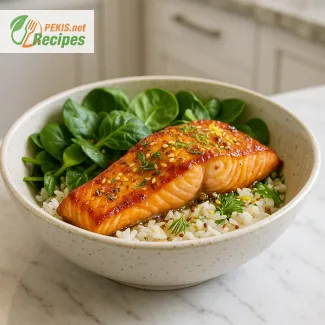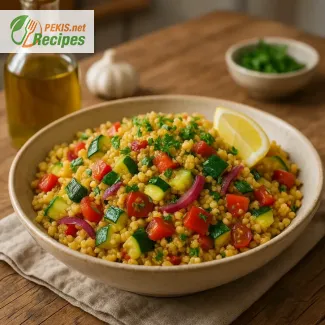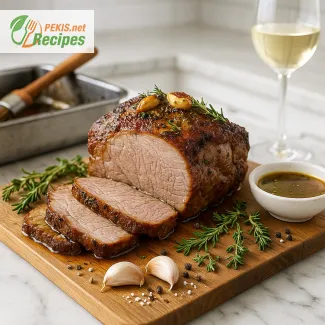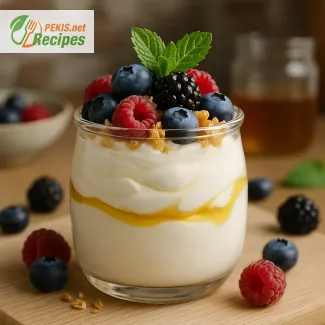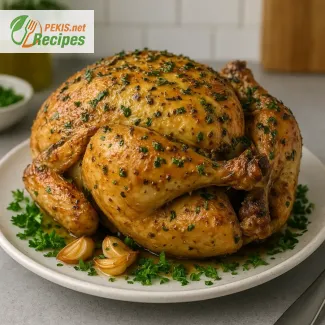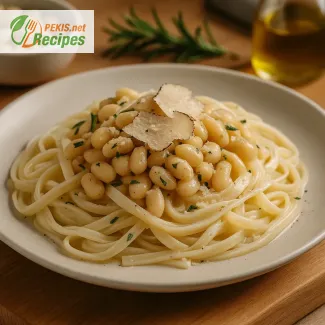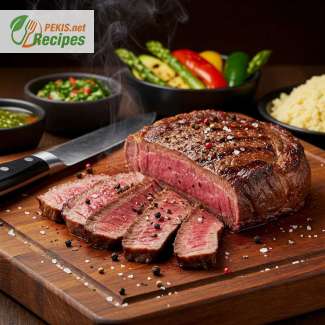
The Ultimate Guide to Perfectly Cooked Picanha
What Makes Picanha So Special?
If there’s one cut of beef that truly embodies the heart of Brazilian churrasco, it’s picanha. This flavorful and succulent cut, also known as top sirloin cap, is prized for its rich marbling and distinctive fat cap, which renders beautifully during cooking, infusing the meat with an irresistible juiciness. Unlike more well-known cuts like ribeye or filet mignon, picanha offers a unique balance of tenderness and robust beefy flavor, making it a favorite among steak lovers worldwide.
The Origin of Picanha and Its Culinary Legacy
Picanha has its roots in Brazilian barbecue culture, where it is traditionally skewered, seasoned simply with coarse salt, and grilled over an open flame. This technique allows the fat cap to slowly melt, basting the meat as it cooks, resulting in an incredibly juicy, tender, and smoky steak. Over the years, this beloved cut has gained international recognition, becoming a staple in steakhouses and home kitchens far beyond South America.
Unlike in the United States, where butchers often divide this cut into smaller portions like the rump or sirloin tip, in Brazil, picanha is left whole, preserving its signature shape and layer of fat, which is essential for its authentic preparation.
Choosing the Perfect Cut
Selecting high-quality picanha is crucial for achieving the best results. Here are a few key factors to consider when choosing your cut:
- Marbling – A good picanha should have visible streaks of fat within the muscle, ensuring a juicy and flavorful result.
- Fat Cap – The hallmark of a great picanha is a thick, untrimmed layer of fat (about 1-2 cm). Avoid cuts where the fat cap has been removed, as this is essential for moisture and flavor.
- Size and Shape – A properly cut picanha should be triangular in shape and weigh between 1 to 1.5 kg (2 to 3 lbs). If it’s too large, it may contain portions of tougher cuts, affecting its tenderness.
Preparing Picanha for Cooking
One of the best aspects of cooking picanha is its simplicity. Unlike other steaks that require complex marinades or seasoning rubs, picanha shines with just coarse salt. The salt enhances the natural flavors of the beef while forming a delicious crust during grilling.
Should You Trim the Fat Cap?
While some might be tempted to remove the fat cap, this would be a mistake. The fat serves as a natural barrier against overcooking, keeps the meat moist, and delivers incredible richness when rendered. However, if the fat layer is excessively thick, trimming it down to around 1 cm can help balance the texture.
To Skewer or Not to Skewer?
In traditional Brazilian steakhouses (churrascarias), picanha is often skewered and sliced into thick steaks before being grilled over an open flame. However, for home cooking, you can cook it whole, roast it, or even pan-sear it depending on your preference. The goal is to achieve a perfectly seared crust while keeping the inside tender and medium-rare to medium.
Cooking Methods for a Perfect Picanha
There are several ways to prepare picanha, and each method highlights its juicy texture and bold flavor in a slightly different way.
1. Grilling (Traditional Brazilian Method)
This is the most authentic way to cook picanha. The meat is sliced into thick pieces and skewered, then cooked over high heat until perfectly charred on the outside while remaining juicy inside. The fat cap melts, creating a buttery texture that enhances the steak’s natural richness.
2. Pan-Searing for a Crispy Crust
For those who don’t have a grill, pan-searing is an excellent alternative. A cast-iron skillet works best, allowing the fat cap to render slowly and develop a deep golden-brown crust. This method locks in the juices while producing a restaurant-quality steak.
3. Reverse Searing for Precision Cooking
If you want to take your picanha to the next level, the reverse sear method is the way to go. This technique involves slowly cooking the meat at a low temperature (typically in an oven or smoker) until it reaches the desired doneness. Then, it’s finished with a high-heat sear for maximum crust and flavor.
4. Roasting for a Juicy and Tender Result
Whole picanha can also be roasted in an oven, allowing the fat to slowly baste the meat as it cooks. This is a great method for feeding a crowd, as it ensures a succulent and evenly cooked roast with minimal effort.
The Best Pairings for Picanha
Picanha is a versatile cut that pairs beautifully with a variety of side dishes and sauces. Some classic accompaniments include:
- Farofa – A traditional Brazilian side dish made from toasted cassava flour, adding a crunchy contrast to the tender meat.
- Chimichurri Sauce – This vibrant and tangy Argentinian sauce, made from fresh herbs, garlic, vinegar, and olive oil, balances the richness of the picanha beautifully.
- Grilled Vegetables – The smokiness of grilled bell peppers, asparagus, or zucchini complements the meat’s bold flavor.
- Classic Rice and Beans – A hearty and authentic Brazilian pairing, bringing both texture and depth to the dish.
- Garlic Butter – A simple garlic-infused butter drizzle over sliced picanha adds an extra layer of richness.
Picanha is a show-stopping cut of beef that delivers unparalleled flavor, tenderness, and juiciness when cooked correctly. Whether you grill it over an open flame, pan-sear it for a perfect crust, or roast it slowly to perfection, this legendary cut is sure to impress. With its simple preparation and bold flavors, picanha is the ultimate steak experience for any meat lover.
- Prepare the meat: Pat the picanha dry with paper towels. Trim excess fat if the cap is thicker than 1 cm (⅜ inch), but leave enough to enhance flavor and juiciness.
- Slice or leave whole: Traditional Brazilian preparation involves cutting the picanha into thick steaks (about 3-4 cm / 1¼-1½ inches thick) and skewering them in a horseshoe shape. Alternatively, you can cook it whole.
- Seasoning: Generously rub the coarse salt over all sides of the meat. If desired, add black pepper and minced garlic for extra flavor. Let it rest for 10 minutes at room temperature.
- Grilling method: Preheat the grill to high heat (about 230-260°C / 450-500°F). Sear the meat on the fat cap side first for 3-4 minutes until the fat starts to render. Flip and sear each side until a deep golden crust forms. Continue grilling until the internal temperature reaches:
- Rare: 50°C (122°F)
- Medium-rare: 55°C (131°F)
- Medium: 60°C (140°F)
- Alternative cooking methods: If using a skillet, heat a cast-iron pan over medium-high heat. Add a bit of olive oil and sear each side for about 4 minutes. For reverse searing, roast the picanha at 120°C (250°F) in the oven until the internal temperature is 50°C (122°F), then finish with a hot sear.
- Resting and slicing: Remove the picanha from heat and let it rest for 10 minutes before slicing. Cut against the grain for optimal tenderness.
Enhancing the Classic Picanha Recipe
Elevating Flavor with Different Seasonings
While coarse salt is the traditional way to season picanha, small adjustments can bring out new dimensions of flavor without overpowering the natural taste of the beef. Here are a few ways to enhance the seasoning while staying true to the essence of this dish:
Adding a Garlic Infusion
Rubbing freshly minced garlic onto the meat before grilling introduces a bold, aromatic layer to the steak. The garlic caramelizes slightly during cooking, creating a subtle sweetness that balances the rich beefy notes. Alternatively, a garlic butter baste can be applied in the final moments of grilling for an even more indulgent finish.
Experimenting with Smoked Salts
Instead of traditional coarse salt, using a smoked sea salt variety can introduce a deeper umami flavor with hints of wood-fired smokiness. This works particularly well when grilling on a gas barbecue, where the smoky notes might otherwise be lacking.
Incorporating Fresh Herbs
Though not traditionally Brazilian, adding a herb crust can elevate the dish significantly. A blend of rosemary, thyme, and oregano, finely chopped and pressed into the meat along with salt and olive oil, creates a fragrant, Mediterranean-inspired variation.
Cooking Techniques for a Juicier, More Tender Result
Picanha is a cut that benefits from precise cooking. Whether you’re a grilling expert or a home cook, tweaking the cooking method can ensure an even more succulent, flavorful outcome.
Reverse Searing for Better Texture
Traditional grilling starts with high heat searing, but reverse searing takes the opposite approach. By slow-cooking the picanha in the oven at 120°C (250°F) until it reaches the ideal internal temperature (around 50°C / 122°F for medium-rare), then searing it at high heat, you achieve:
- A more even doneness from edge to center.
- A deeper, crisper crust without overcooking the interior.
- A gentler fat rendering, leading to better moisture retention.
Using a Cast Iron Skillet for Enhanced Browning
If grilling isn’t an option, a cast iron skillet can deliver an equally delicious picanha. Cooking it in a hot, dry skillet allows for superior caramelization while trapping all the beef’s natural juices. For extra flavor, a knob of butter with thyme and garlic can be added during the final minute of cooking.
Why Homemade Picanha is Superior to Restaurant Versions
Though Brazilian steakhouses (churrascarias) specialize in picanha, preparing it at home offers several advantages:
Control Over Quality and Sourcing
Home cooks can select high-quality beef, ensuring the cut has the right marbling and a properly trimmed fat cap. Many restaurants trim too much fat for aesthetic reasons, but at home, you can retain the optimal 1 cm (⅜ inch) fat layer for maximum juiciness.
Customization for Personal Preference
Restaurants typically follow a one-size-fits-all approach, but at home, you can:
- Cook each portion to different doneness levels based on preference.
- Adjust seasoning for more depth or keep it as pure as possible.
- Pair the steak with your choice of sides, rather than standard accompaniments.
Fresher and Healthier Ingredients
When cooking at home, you avoid excessive sodium and processed additives, ensuring a cleaner, healthier version of the dish.
Common Mistakes to Avoid
Even with a high-quality cut, small mistakes can lead to a less-than-perfect result. Avoiding these pitfalls ensures a more flavorful, tender steak every time.
Overcooking the Meat
One of the biggest mistakes is overcooking picanha, leading to dry, tough beef. Always use a meat thermometer to ensure the internal temperature stays within the ideal range:
- Rare: 50°C (122°F)
- Medium-Rare: 55°C (131°F)
- Medium: 60°C (140°F)
Cooking Straight from the Fridge
Placing cold meat directly on the grill results in uneven cooking. Instead, let the picanha rest at room temperature for about 30-40 minutes before cooking.
Flipping Too Frequently
Flipping the meat too often prevents proper searing and caramelization. Instead, allow each side to develop a rich crust before turning.
Cutting the Meat Incorrectly
Picanha has a distinct grain direction, and slicing against the grain ensures maximum tenderness. Cutting it with the grain leads to chewy, less enjoyable bites.
Healthier Alternatives and Modifications
For those looking to enjoy picanha while making health-conscious adjustments, here are some ways to modify the recipe without sacrificing flavor.
Leaner Cuts for Less Fat
While the fat cap is a key feature of picanha, some may prefer a leaner alternative. Consider:
- Sirloin tip – A similarly flavored, but leaner cut.
- Tri-tip steak – Offers a tender texture with less fat.
Alternative Cooking Oils
Instead of butter or traditional beef fat, healthier cooking oils like avocado oil or extra virgin olive oil can be used to sear the steak while still achieving a rich, caramelized crust.
Lower Sodium Options
Instead of using coarse salt, consider a mix of herbs, citrus zest, and a small amount of smoked sea salt to enhance natural flavors while reducing sodium intake.
Unique Flavor Variations to Try
Though traditional Brazilian picanha is simple, small flavor twists can elevate the dish without losing its authentic essence.
Coffee and Cacao Rub
A blend of ground coffee, cacao powder, and black pepper creates a rich, smoky crust that enhances the beef’s natural umami flavors.
Spicy Chimichurri Marinade
Marinating picanha in chimichurri sauce with extra red chilies adds a zesty heat while tenderizing the meat.
Asian-Inspired Picanha
For a fusion twist, try marinating the steak in:
- Soy sauce for umami richness
- Sesame oil for nuttiness
- Ginger and garlic for depth
The beauty of picanha lies in its simplicity, but small adjustments in seasoning, cooking method, and preparation can take this classic cut to an entirely new level. Whether opting for traditional grilling, reverse searing, or modern fusion flavors, each approach offers a unique way to enjoy this Brazilian favorite while ensuring the best texture, tenderness, and taste. By following these expert tips, you can create a perfectly cooked picanha that surpasses even the best steakhouses and churrascarias.
This recipe is gluten-free and contains no common allergens such as dairy, nuts, or eggs.
Substitutions for Allergens and Gluten-Free Adjustments:
- If avoiding excessive sodium, use a reduced amount of salt or a salt substitute.
- If you prefer an oil-free version, cook the picanha using its own fat without adding olive oil.
- Iron: 4.2 mg – Essential for oxygen transport and red blood cell production.
- Zinc: 7.5 mg – Supports immune function and wound healing.
- Vitamin B12: 2.3 µg – Important for nerve function and DNA synthesis.
- Selenium: 35 µg – Helps protect cells from oxidative stress.
- Conjugated Linoleic Acid (CLA): Found in beef fat, helps reduce inflammation and support heart health.
- Coenzyme Q10: Supports energy production in cells and protects against oxidative stress.
